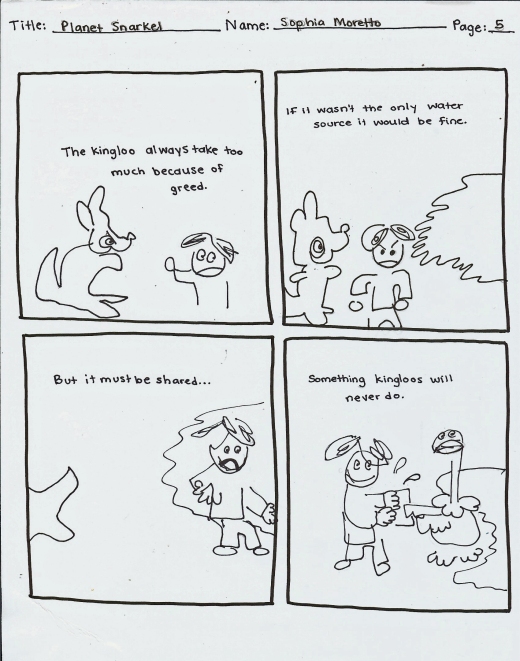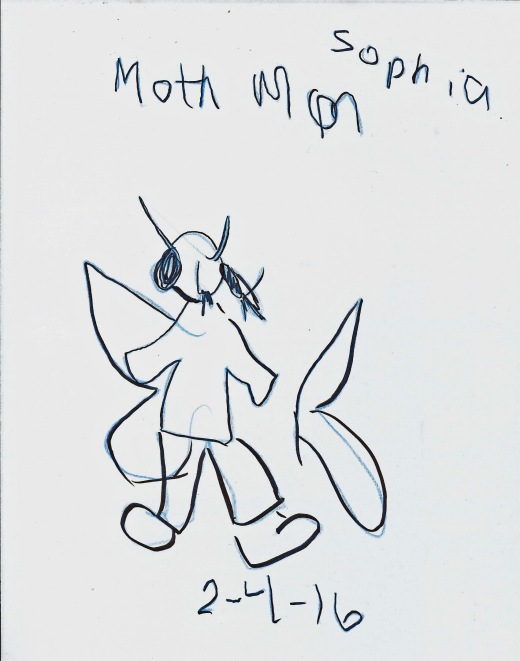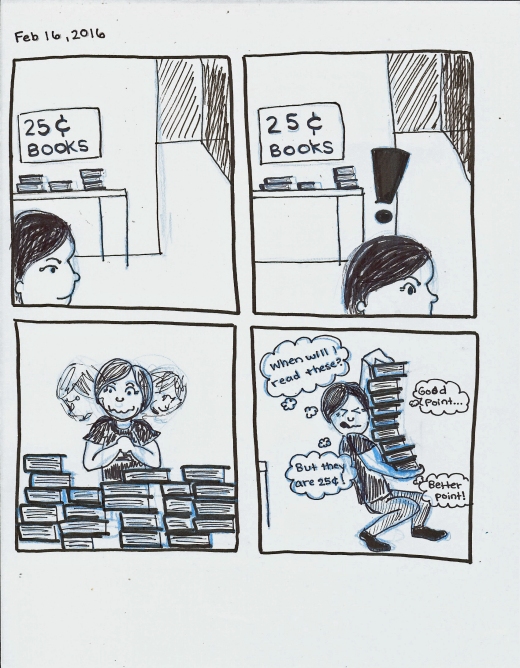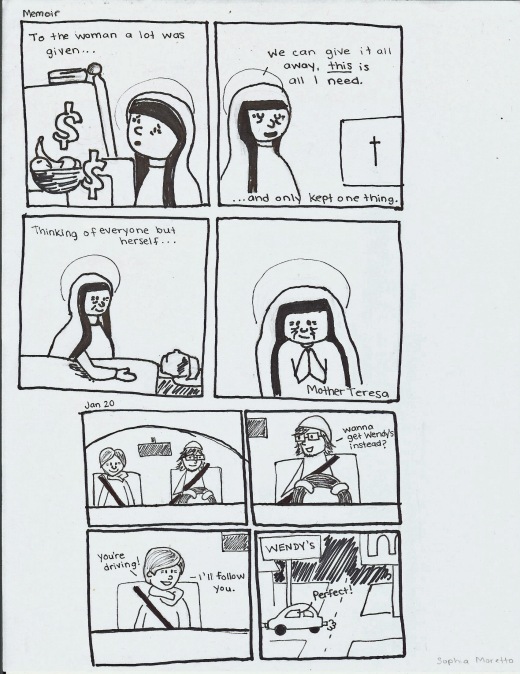




Tag Archives: 2016 Sophia Moretto
Sophia Moretto


Sophia Moretto: Through the Woods by Emily Carroll
For this essay I read the graphic novel, Through the Woods by Emily Carroll. Her novel consisted of an introduction and conclusion with a collection of five short stories between. The stories had a dark sense of beauty with each story presented in this novel. All of the stories presented in the novel were mostly focused on paranoia and the horror of discovering the imaginary becoming reality. Throughout her individual stories, Carroll was able to successfully capture the discomforting feeling darkness and uncertainty place on an individual’s wild imagination. She did this through her choice in color, type placement, and panel layouts.
One aspect Carroll presented that made her work successful was her choice in color. Her color palate, when color was used, consisted usually of red, blue and yellow. Having a simplistic color palate made it easy to work with in terms of what each color would stand in for. She allowed the color to usually become part of the mood of a certain panel when certain events occurred. One example was when something horrific was occurring the entire panel would be in red and when something sad was happening, blue would be a dominating color. The color filters and supplements allowed Carroll the freedom to choose to display the gruesome scene occurring or if she wanted to make the viewer assume what was occurring based on the color and the preceding panels. In my opinion I would say she was successful in setting up the correct assumption through her colors.
Carroll also presented her ability to work with type placement to keep the story moving. She used what I am assuming was her own handwriting to add a sense of suspense in her narrative. The shock of horror in the dialogues would not have been as strong if the type were in a traditional typeface, serif or san serif. I was mostly impressed by the way she expressed the enchantment through the type in the story A Lady’s Hands are Cold when the dead woman was singing to the young bride. Another great example of Carroll putting the type to good use was during the last short story The Nesting Place when Bell would drone out the conversations between her brother and his fiancé. The type would run off the page to where the viewer had no idea what they were talking about, neither was it important, similar to what Bell heard. These stories truly showed how much of an impact type can have on a mood in a graphic novel. Carroll definitely used the type to her advantage in her stories.
Carroll was also powerful in her panel layouts. The most common panel layout that she worked with was open paneling. What I mean by this is she would completely remove the panel outline to create a sense of discomfort, a fear of the unknown, for the viewer. It gave the action occurring more room to creep throughout each spread. Carroll was then able to play with size and tension more freely per page. She did not ever crowd anything that did not need to be. I thought overall it was a successful approach for the idea that we are not comforted when it comes to the unknown, the darkness and the monsters hiding around us in our daily lives.
Sophia Moretto: The Crow by James O’Barr
I chose to read the graphic novel, “The Crow,” by James O’Barr for my first essay assignment. In this novel, Crow, the main character, and his fiancé Shelly quickly become the victims of a vicious drug gang. Although Crow miraculously survives two gun shots to the head, Shelly is brutally raped and slaughtered in front of the seemingly deceased Crow. His physical wounds are eventually healed but his mental wounds are far from repair as he is left alone to mourn the loss of Shelly. Discovering his immortal abilities after the freak recovery, Crow makes it his obligation to Shelly to track down and murder the men who killed Shelly.
O’Barr used mostly a realistic style to create Crow’s world. In class we discussed the importance of avoiding realistic drawings as much as possible to disconnect the reader from the reality they are escaping from when reading a graphic novel. But when O’Barr decided to have a more realistic style than a simplified version, he began to break down the wall that divided reality from his imagination. The choice to draw a more realistic depiction of the story allowed a cynical feel to emerge through the story. If “The Crow” would have been simplified any more than it was then the readers would fee an emptiness in the story. By emptiness, I mean an uncomfortable feeling given that the visualization of the story would not have matched the tone of the story O’Barr was addressing. It would have been more reserved and not as realistically connected. The fact O’Barr wrote “The Crow” as a form of his personal diary would not have seemed as evident if he had toned down the realistic qualities of his drawings. The world of “The Crow” was more impactful as a realistic style.
Another successful aspect of O’Barr’s story was his ability to switch between Crow’s personal dreams and his reality. O’Barr focused on making the dream world seem as if it were hazy and did not have a clear grasp on reality through his saturated drawings. The drawings could also be said to be more expressive from the dream world. These were the moments O’Barr became intimate with his memories of his own experience with the woman he lost in his life. The way he approached them with a tenderness in his style and calm greys showed that those were the moments he wanted to remember. Those moments were quickly interrupted with harsh, thick black lines created when Crow was brutally thrown back into reality.
O’Barr also has a way with setting the mood in his graphic novel. He works mostly with shadows and is able to draw in the viewer by hiding most of the expressions of Crow that the reader deem as necessary to create a sense of discomfort. His eyes are usually shaded over and most of his body. By not being able to always see Crow’s eyes, the viewer is unable to trust him completely as a character. The mysterious quality thrown onto his character can be easily correlated with O’Barr himself, seeing the character, Crow, was solely based off his personal reaction to his own situation.
Overall the graphic novel had certain aspects that made it a successful novel. O’Barr’s realistic stylization, attention to line weight and greyscale and creation of mood assisted in creating the world of “The Crow”. The novel is also proof that the more a graphic novelist is invested in his or her story the more successful they will be at presenting their topic of interest. O’Barr was definitely invested in this story and allowed his artwork to speak for him when he was unable to speak for himself.
Sophia Moretto: With Eyes Closed
A series of drawings done in class with eyes closed and with the non-dominant hand.







Sophia Moretto




Sophia Moretto: Comics as Haiku



Sophia Moretto
